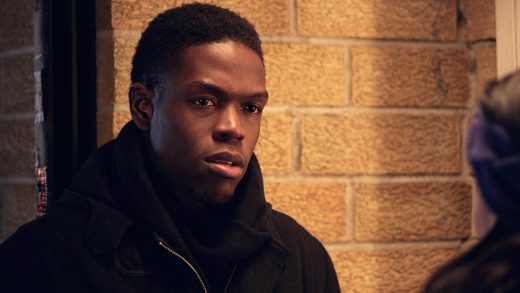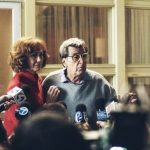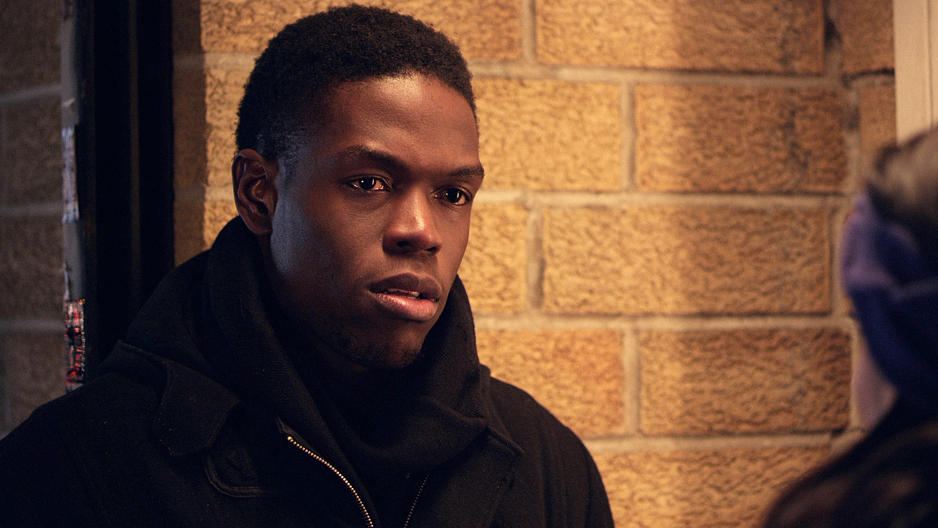How To Finish Making Your Movie–And Get People To Actually Watch It
The last shot of Beatbox, the beatboxing-themed film I have been working on as a producer for several years, was in the proverbial can. Our editor, Christopher Branca (Page One: Inside the New York Times) had sifted through more than 100 hours of footage to splice together a rough cut. And we had just received word we were one of 10 feature-length films out of 500 entries selected for Independent Filmmaker Labs, which lauded our film’s “outstanding promise and creative vision.”
Based in Dumbo, Brooklyn, in a state-of-the-art facility that houses the Independent Filmmakers Project (IFP), Independent Filmmaker Labs is akin to a startup incubator, working with newbie moviemakers to help them finish their films. The Labs promised to lead us through the next steps. We would receive “mentorship, support, and one-on-one advice from top technical, creative, and industry experts.” Ultimately, our goal was to screen at film festivals and land that all-too-elusive distribution deal. After all, what good is making a movie if no one can see it?
It had been a long, circuitous journey to this rough cut, a journey that had taken five years from the moment my producing partner, Jon Furay, and I came up with the idea of setting a movie in the world of beatboxing. (You can relive our adventures in the first four parts of this series. In the first installment, I explained why making a movie is like launching a startup. The second showed how a good script is like a good idea for a startup, but you need a lot more to attract investors. In the third, I covered the line producer, who plays a vital role in any movie. The fourth detailed the numerous technical challenges we overcame during our three-week shoot in Brooklyn.)

Finding The Right Editor
While there’s great satisfaction in finishing a shoot, post-production is where the magic happens. It is the high gloss on a gemstone; it takes a two-dimensional film and transforms it into an immersive experience, one that is not only a treat for the eyes but piques your other senses. It’s when you hone your narrative through editing so that each scene dovetails seamlessly into the next. You invest in sound design to add ambient noises like the sounds of footsteps as characters shuffle down the street. The movie’s color is made consistent throughout, from scene to scene, and music and titles are added.
The first question we faced in our very first Independent Filmmaker Labs seminar was: How much money had we budgeted for our post-production of our beatboxing film? Well, like most filmmakers operating on a shoestring, not enough. After the shoot, we had squirreled away a few thousand dollars, thanks to coming in under budget. When we added up how much editing, music, sound design, and color grading would cost, we got estimates ranging from $40,000 to $70,000 and up.
Like an underfunded startup, we knew we would have to beg, borrow, and bargain.
A film is only as good as its editing, so we took our time interviewing editors. We sought someone who had worked in both documentaries and features but also had experience with music. And we wanted someone with the right temperament to collaborate with our director.
Each candidate we met came with risks. For example, one was working with Beyoncé, so we might get him for six weeks before he left to work on something else. Another guy’s career was on the upswing and he had been moving from one well-financed indie to another; we didn’t think we could keep him.
Then we met Christopher Branca, who hailed from the world of documentaries—he was part of a team of editors on the Emmy-nominated New York Times documentary Page One. A former professional bass player, 37-year-old Chris had worked on a small film feature titled Test that hadn’t come out yet and Big Star, a music-driven documentary. We knew it was an asset to our music-themed movie to have a music-savvy editor. What’s more, to meet Chris is to like him, and he immediately grasped what we were looking for.
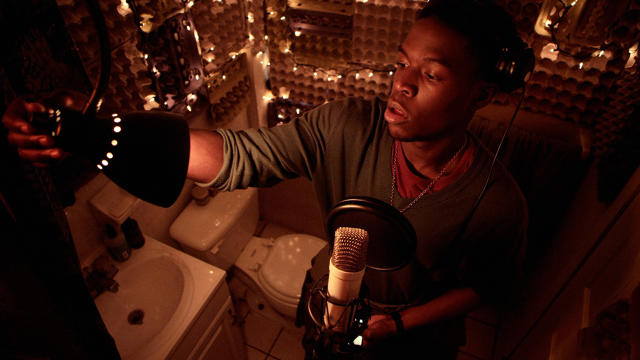
How To Edit A Movie
For Chris, as an editor, it all starts with the screenplay. “For narrative, once you read the script and get the idea of tone, you can go off your first instinct what the movie feels like,” he says.
His first step was to cobble together a rough cut, which he did on his own with no input from us. Chris could see we didn’t have a lot of “coverage”—that is, additional footage shot at different camera angles. A scene might have the best delivery of a line but the camera angle wasn’t as good, or the scene was shot well but the acting was flat on that particular take. This was understandable; we were a micro-budget film and couldn’t keep shooting all day long. Chris got around it by being creative, pasting dialogue from one take into another shot from a different camera angle.
Five weeks later, we watched a complete rough cut. While it was a thrill to see the characters and words in the screenplay come to life on-screen—the story held together well and the acting was strong—the cut also underscored some shortcomings. The beginning dragged and we knew we had to get to the beatboxing sooner, since the beatboxing performances were nonpareil and separate our film from all others. Other scenes could be improved by sharper cuts. It was the non-beatboxing music in the film, however, that proved to be our most vexing problem.
We had two needs: the score and the soundtrack. A film score (sometimes referred to as underscore or incidental music) enhances the story. It runs in the background. The soundtrack is composed of songs that are used within a movie as part of the narrative, not behind the narrative. For instance, one scene took place on a Brooklyn rooftop and involved a circle of beatboxers backing our lead actress singing Richard and Linda Thompson’s “I Want to See the Bright Lights Tonight,” which our director, Andrew Dresher, had creatively reimagined.
Whether soundtrack or score, the music had to be catchy, something to make you move in your seat. It couldn’t be a loop from GarageBand. It also had to fit the film. Some of the temp tracks that Chris had used as placeholders, like Neneh Cherry’s “Buffalo Stand,” a dance hit released when hip-hop was crossing into mainstream pop, didn’t reflect the tone of the film we had made—a film about ambition, love, and beatboxing.
We all contributed ideas that might help better fill the gaps, streaming tunes for each other from Spotify. One band that kept popping up was a Tribe Called Quest. We knew we could never afford to license their music, but our director, Andrew Dresher, knew members of the band Dujeous, a New York City-based hip-hop collective that had started out in the mid-1990s. Dujeous had similarities to A Tribe Called Quest. Andrew had Chris layer in snippets from their songs, which we all liked. Having a well-networked team full of people like Andrew was an invaluable resource throughout our production process.
Still, this was a movie about music that takes place in the world of music, yet somehow we hadn’t settled on our lead character’s musical DNA. He was supposed to be a composer/musician and part-time DJ who created music from his laptop in his home recording studio. But we lacked a collective concept for what the music he played and made sounded like, and this lack of clarity affected the heart of our movie.
Fortunately, we were able to bring in Alex Fredericks, a digital media executive who specializes in music services, artist management, and production. A former DJ, Alex knew immediately what kind of music that would best reflect our lead character. Some of it we would have to license: the music that Pete spins in a club, for example. The tracks that our character would create himself in the movie would have to come from young, up-and-coming composers who our audience was most likely unfamiliar with.
The music Alex lined up transformed our main character.
Looking back, however, perhaps our biggest mistake was not locking in a composer and music supervisor before the shoot. If we had, we probably wouldn’t have failed to prerecord the songs and beatbox performances. Instead, we did it backwards, overdubbing the beatboxing and singing after the fact while synching performers’ lips and mouths to the music. It wasn’t a fatal error, because it worked out, but it added many additional hours to the editing and music recording processes. Chris, our editor, was originally contracted for 10 to 12 weeks but with all of the complications he ended up devoting 20 weeks to the film.
Over the course of several months, producer Jon Furay negotiated licenses to use Dujeous for portions of the score, for our freshly recorded Thompson song, and for the music that Alex Fredericks brought to us. It was an inordinately complicated process and the licenses had to cover festivals, theaters, and streaming.
“Often these rights are controlled by different entities and there can be multiple owners of each,” Jon says. “You could be dealing with 20 people for one song, and you don’t have a lot of time, you have no money, so that can be a problem.”

How To Use Sound To Tell A Story
With the movie locked, the edits complete, the beatboxing and other music added, and the licensing secured, we were ready for sound design. We approached Dig It, an audio mix and post-production studio in Manhattan, which has a bevy of film, TV, and commercial credits—Z Nation, Universal Soldier: Day of Reckoning, Inside Job, Joan Rivers: A Piece of Work, Lewis Black: In God We Rust. Fortunately, Dig It Audio’s founder, Tom Efinger, juggles several projects at once and agreed to stay within our limited budget, working on our movie during late-night lulls. While most films require between five to seven weeks of sound design and mix, Tom and his team completed ours in about two weeks because of our budget constraints.
Every movie needs a few basic things to happen if it’s going to sound good. First, there’s a proper dialogue edit and mix. Some dialogue must be made louder if the character is angry or lowered during intimate moments. This dialogue must be placed in context within a scene, which is also where ambient noises come into play, adding richness to the environment. There’s a difference between a door that creaks open and one that doesn’t. Sounds from the street below might bleed through the window. If you’re sitting at a table in a restaurant, you should hear the shuffling sounds of plates far away; closer sounds might include a maelstrom of human conversation. Walk by a kitchen and you might hear the sounds of dishes being stacked, water boiling on a stove, a chef screaming at his sous chef. Sound design is an art and can drastically alter how a viewer experiences a movie.
“I like to say to the director, ‘How do you want this scene to feel?” Tom says, “or how do you want the feeling in this scene to change?” Maybe a scene starts out with a mellow ambience but by the end there’s tension—perhaps the rattling of plates and the dishes in the background become abrasively loud. Or maybe the sound of a book plopped down on a table punctuates the dialogue. “We ask ourselves what sounds would be there in reality, then play with the environment in a way that enhances the director’s vision.”
Then there are sounds effects you don’t necessarily see, which Tom calls “design effects.” They can also greatly color the audience’s experience. Let’s say you have a couple sitting down to a quiet breakfast at a sidewalk café. Suddenly on the street, out of camera range, you hear a Doberman snarling. That would create tension in the scene. If you instead feature the sound of children playing on a playground from somewhere off-camera, you create an atmosphere of hopefulness and happiness.
For Beatbox, Tom made it a point to emphasize the musicality of Brooklyn, which is where the film is set. “We took advantage of any opportunity we had to let the city have a voice and provide little rhythmic elements, little touches that made the city a well-carved character.”
“We turned up the sound of a door slamming, a metal keg banging down stairs, and a hydraulic tailgate that folded down. We looked for anything we could find for rhythmic undertones,” he says.
Tom says he also focused on making all of the beatbox scenes sound powerful and realistic. In a scene that takes place on a Brooklyn rooftop, beatboxers freestyle then back our lead female character. In that scene, Tom added “a little bit of sugar,” spatial reverb (short for reverberation, a sound that resonates in a space), so the sound could ring out.
“Reverb tends to be sexy and fun, makes things sound bigger,” Tom says. “In the case where the beatboxing moved into club environments, we added a whole club-style reverb that would make it sound a lot bigger, so you feel like you’re standing in front of the booming sound system.”
With the sound design complete, we moved on to color correction and grading. Color correction is correcting images that have perceived mistakes: underexposure, overexposure, an object that is so overly shiny that you need to blur it. Color grading takes it a step further. It changes the tonality of the colors in the image to imply a certain feeling or emotion. For Beatbox, the result was a film that looks bright, lush, and professional. It will offer an immersive experience whether streamed on an iPhone or on a big screen at a theater.
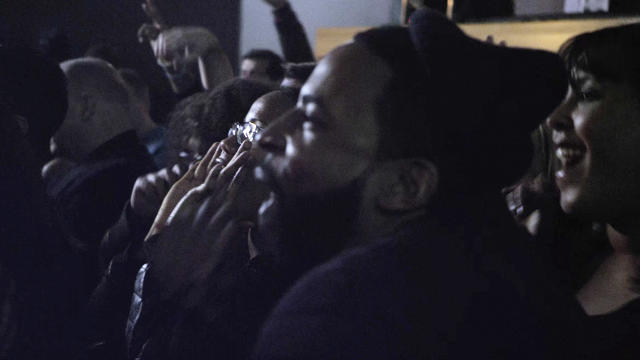
If A Tree Falls In A Forest…
All of this effort would have been for naught if we couldn’t land a distribution deal. The odds were stacked against us. In 2015, almost 10,000 films were produced, while only around 600 were released. Do the math: Just 6% of films that are made land a distribution deal.
Fortunately, we are one of those 6%.
A couple of months ago we inked a deal with Gravitas Ventures to distribute Beatbox. Our release date: Nov. 15th. (People can pre-order here.) Our path to distribution was a mix of luck and being really good at telling our own story. We attended IFP Film Week at Lincoln Center, which coincides with the New York Film Festival. It’s like speed dating for filmmakers, festival programmers, sales agents, and distributors. We gave a verbal pitch for the movie, since it was unfinished, and a distributor expressed interest. After we completed the movie negotiations dragged on and our lawyer, Evan Krauss of Gray Krauss, suggested we approach Gravitas; then negotiations were completed relatively quickly. I’d definitely recommend events like IFP Week for filmmakers with a movie looking for distribution help.
Anna Roberts, manager of digital media sales, told me that Gravitas releases between 20 and 30 movies a month. She and her colleagues look “for indie films that have a huge potential.”
For us to stand a chance in a competitive cinematic landscape, we needed to hand her the standard deliverables consisting of five main elements: the feature, captions, trailer, film poster, and metadata—the industry term for synopsis, cast, producers, director, and run time of the film. This information pops up on every interface where people watch movies.
“People look at the poster art for 1.5 seconds before deciding if they want to look more into a film,” she says. “With your trailer, you only have 60 seconds to convince someone to buy or watch your film.”
While you won’t see Beatbox in movie theaters, you’ll find it on iTunes and it will be available for streaming on Amazon, Vudu, Google Play, YouTube (the transactional side), and Microsoft xBox. Beatbox will also play on cable—Cox, Charter Communications, Dish Network, Verizon Fios, and, in Canada, Rogers and Shaw. No one can accuse us of not taking advantage of every digital platform at our disposal.
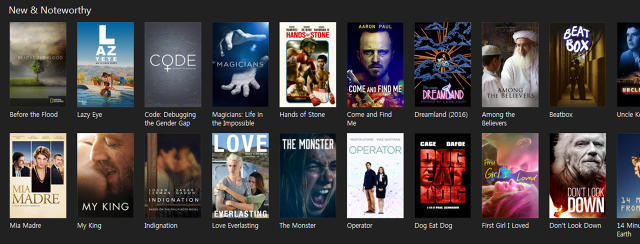
Ratings and reviews, Anna says, are currency. IMDB ratings are key. On iTunes, we’ll have to hope for positive reviews from Rotten Tomato. In order to get any reviews at all, we need people to watch our movie. Hopefully, the reviews they leave us will be positive.
Almost seven years after I came across YouTube clips of beatboxers and my producing partner Jon Furay and I first imagined of a feature film set in the world of beatboxing, our movie is finally coming out today. We’ve poured our hearts—and our money—into this film. We’ve learned a lot about the filmmaking process as we’ve gone along. Now it’s up to the marketplace to determine our fate.
Adam L. Penenberg is a journalism professor at New York University and a producer of BEATBOX.
Fast Company , Read Full Story
(36)

